Growing orchids in a closed system is an unusual technique, the popularity of which is due to its simplicity and effectiveness. This method has its own characteristics, advantages and disadvantages. Conservative growers often criticize him. However, if the methodology was fatal to orchids, it would not have received so many positive reviews from people who decided to apply it. In order for the epiphytic plant to grow well in a flowerpot without drainage holes, planting and care must be performed according to all the rules.
Content
Closed system principle
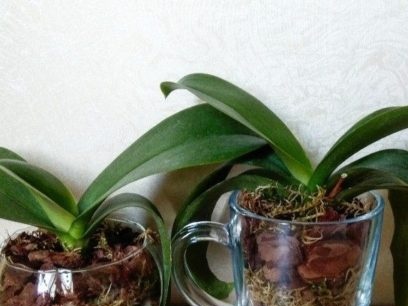 In the wild, the roots of epiphytes are open. Therefore, orchids are traditionally planted in flowerpots with holes from which excess fluid flows. Sudden fluctuations in temperature and humidity can cause stress, which provokes a halt in flower growth. It is in a closed system that the most important environmental parameters are kept at the same level. Its principle is that the plant is planted in a container without holes, pouring a little water.
In the wild, the roots of epiphytes are open. Therefore, orchids are traditionally planted in flowerpots with holes from which excess fluid flows. Sudden fluctuations in temperature and humidity can cause stress, which provokes a halt in flower growth. It is in a closed system that the most important environmental parameters are kept at the same level. Its principle is that the plant is planted in a container without holes, pouring a little water.
Orchids planted in an isolated container grow roots in the direction of the power source, i.e. way down. Only the bottom is flooded with liquid. Constant humidity promotes the development of a powerful root system, the intensive growth of leaves and peduncles. The evaporation of moisture is prevented by a layer of moss laid on top of the tank. Even exposed areas of the roots do not dry. Despite the absence of drainage holes at the bottom, the liquid does not stagnate, and the roots do not rot.
Agrotechnics orchids in a closed system
The method of growing epiphytes in a closed system is often used as a temporary one to reanimate weakened or damaged specimens. In greenhouse conditions, the lost root system is quickly restored. However, if you follow the rules of agricultural technology, phalaenopsis in a closed system can be successfully grown for many years.
Landing Features
Closed system for epiphytes - a pot without a single drainage hole. It must be transparent, and the material from which it is made - glass or plastic. Through the walls of such a container it is convenient to control the water level and monitor the status of its contents. Only the root system is placed inside the pot. The upper part, which consists of a socket with leaves and peduncle, is located outside the tank.
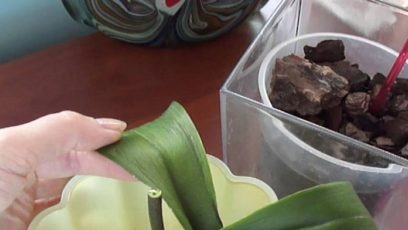 Before planting an orchid in a closed system, you need to prepare the following attributes:
Before planting an orchid in a closed system, you need to prepare the following attributes:
- transparent capacity;
- expanded clay;
- bark;
- irrigation water at room temperature;
- moss sphagnum.
How to choose a pot
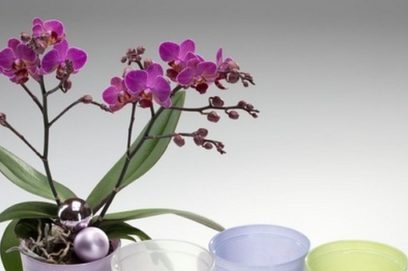 Experienced growers for a closed system prefer to use glass pots. They are more stable and decorative than plastic. In addition, the glass surface is not porous and root ingrowth is excluded. Pots made of plastic are good in that you can easily make holes in them if the new method of growing is unsuccessful. It is enough to pierce the bottom in several places with a sharp hot pin. In addition, plastic pots are lightweight and do not break, which means they will last longer.
Experienced growers for a closed system prefer to use glass pots. They are more stable and decorative than plastic. In addition, the glass surface is not porous and root ingrowth is excluded. Pots made of plastic are good in that you can easily make holes in them if the new method of growing is unsuccessful. It is enough to pierce the bottom in several places with a sharp hot pin. In addition, plastic pots are lightweight and do not break, which means they will last longer.
Orchid can be planted in containers of various shapes. However, it is difficult to extract fragile roots from a round container without damaging them. If a transplant is needed, such a container will have to be broken. The processes of the phalaenopsis or plants with small roots are suitable for transparent pots, beautiful glasses or glasses. Large orchids need bulk containers: multi-liter flowerpots or small aquariums. They can grow several flowers at once. However, you do not need to plant them all at the same time. Test a closed system on a single plant.
It is advisable to choose a container whose inner surface is flat and the edges expand upward. If the flower is planted in a container with two handles, it will be convenient to move. In a pot with a narrowed top, moisture lasts longer. Such a vessel is suitable only for keeping plants in warm rooms. At a low temperature and a waterlogged substrate, a fungal infection develops.
Substrate Components
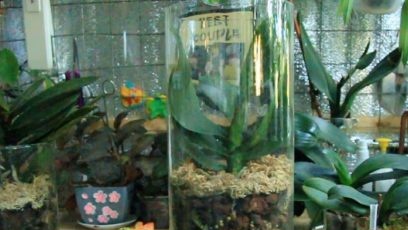 When planting phalaenopsis in an isolated container, the soil components are not mixed, but laid out in layers in the form of a “sandwich”. For substrate preparation the following components will be needed:
When planting phalaenopsis in an isolated container, the soil components are not mixed, but laid out in layers in the form of a “sandwich”. For substrate preparation the following components will be needed:
- expanded clay;
- charcoal;
- peat moss;
- pine bark (sliver size - 1-3 cm).
The components of the substrate have antimicrobial properties. Their layered placement forms a natural filter. Components for a closed system can be bought at a flower shop or assembled in the forest yourself. It is recommended to take pine bark. Her pieces should not be too small. Otherwise, air circulation will be disrupted, which will negatively affect the state of the roots. Mold must not be present on the collected material. The bark can be replaced with cones. Better to collect live moss. Its green stems will subsequently resume their growth.
Purchased components for a closed system are recommended to be disinfected, as high humidity provokes the development of the fungus. To get rid of possible parasites and infections, moss and bark are placed for 2 days in a freezer. It will not work to calcine them in the oven, since such material is highly flammable. Forest substrate does not need to be cleaned or disinfected. It is poured into a flower pot without preliminary preparation.
Step-by-step instructions for planting an orchid
When planting orchids in containers that do not contain holes, adhere to the following sequence:
- Capacity and expanded clay disinfect, dousing them with boiling water.
- The bottom is covered with a layer of expanded clay drainage. Its height should be equal to 1/4 of the volume of the pot.
- A layer of moss 0.5-1 cm thick is placed on the drainage.
- The rest of the space is covered with crushed bark, to which a little charcoal is added.
- Warm water is poured into the pot. In order for the substrate to absorb moisture as much as possible, it will take at least 30 minutes.
- Excess liquid is drained, leaving it only on expanded clay.
- The flower is planted directly in the bark. The roots are straightened so that they do not bend, do not overlap with each other and do not come into contact with the drainage. The root neck should rise slightly above the level of the pot. It cannot be buried inside.
- Sphagnum moss is well soaked in water, squeezed and distributed in a thin layer over the entire surface of the cortex. It will serve as a mulch, which will reduce the evaporation of moisture from the container. Between the root neck and sphagnum, you need to leave free space to avoid decay.
Closed Phalaenopsis Care
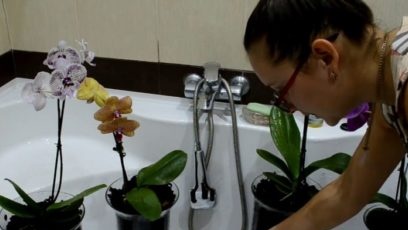 When the transplant is completed, the flowerpot with the plant is put on a permanent place. To grow a healthy orchid, you should adhere to the optimal parameters of temperature and humidity.The daylight hours should not be less than 16 hours. Tropical plants do not like direct sunlight, because in nature they live in the lower tier of the forest.
When the transplant is completed, the flowerpot with the plant is put on a permanent place. To grow a healthy orchid, you should adhere to the optimal parameters of temperature and humidity.The daylight hours should not be less than 16 hours. Tropical plants do not like direct sunlight, because in nature they live in the lower tier of the forest.
When choosing a place for an orchid, it should be borne in mind that it does not tolerate heat or cold. The optimum temperature for growing phalaenopsis is + 22 ... + 27 ° C. Thermometer readings below + 18 ° C are undesirable. During growth, the flower needs only regular watering and top dressing. They do not spray it from the spray gun and do not bathe in the shower. Such procedures for orchids in a closed system are useless.
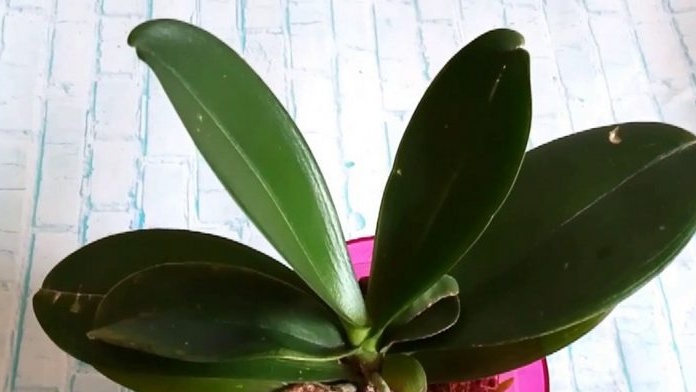 You may be interested in:
You may be interested in:How to water Phalaenopsis properly
The first time after planting, the orchid is not watered. Drops of condensate on the inner surface of the tank indicate that there is still enough moisture. The lightness of the pot, the lack of condensation, the change in the shade of the roots from green to grayish testify to the need for orchid watering. In summer, water is added to the pot more often - 2-3 times a week. Its temperature should not be lower than room temperature.
Watering orchids in a closed system is carried out in two ways:
- Submersion of the substrate in water. The liquid is poured so that it covers all layers. The bark is saturated with moisture in 15 minutes. Then the liquid is carefully drained, tilting the pot and holding a layer of mulch with your palm. In winter, the time required to saturate the bark with moisture is reduced to a few minutes.
- The second way is to regularly top up the settled water. The liquid is poured in a thin stream until it completely covers the mound of expanded clay. Such a volume of water must be maintained constantly. Expanded clay should not dry out, otherwise the roots will begin to fade and dry. If the fluid is above the drainage layer, the orchids will rot.
Feeding Features
In order for the orchid to actively grow and delight in lush flowering, it is necessary to apply fertilizers specially designed for epiphytes. Mineral mixtures containing all the necessary substances are used as top dressing. Fertilizers begin to be applied when the planted plant takes root and forms a new pair of leaves. Watering with a nutrient solution is alternated with ordinary water.Orchids in a closed system are rarely fed and in small doses, because all nutrients remain in the pot and are completely absorbed by the roots. The dosage recommended in the instructions must be reduced by 10 times. Diluted fertilizer can be sprayed on the leaves and upper roots. Top dressing should contain the following substances:
|
Trace elements |
Macronutrients |
|
Magnesium |
Phosphorus |
|
Boron |
Nitrogen |
|
succinic acid |
Potassium |
|
Manganese |
|
|
Immunity Boosting Vitamins |
During the growing season, you do not need to fertilize orchids in such circumstances:
- summer heat;
- flowering period;
- during illness or weakness.
The following indications indicate the need of an orchid for top dressing:
- new leaves grow small;
- the appearance of red stripes on the bottom of the leaf blade;
- blanching and wilting of foliage at the base of the outlet.
Possible problems
Subject to the rules of agricultural technology, difficulties should not arise. However, gardeners often encounter such problems:
- When using too deep a capacity, the flower simply dries up, because The root system is located far from moisture.
- Mold appears inside the container. During adaptation, there is no need to be afraid of her. In 90% of cases, the mold disappears without any consequences when the orchid takes root.
- The use of excessively small particles of the cortex causes root rot. After all, the wet dust is compacted and does not let air through. The substrate should consist of sufficiently large components.
- If the flower is watered very often, and even with cold water, rotting of the roots cannot be avoided.
- A humid environment attracts pests. They are disposed of using special insecticides or garlic water. White midges will disappear if you reduce watering and dry the substrate.
- A green coating gradually appears on the walls of the pot. It spoils the view, but it is impossible to prevent its formation.
Advantages and disadvantages of a closed system
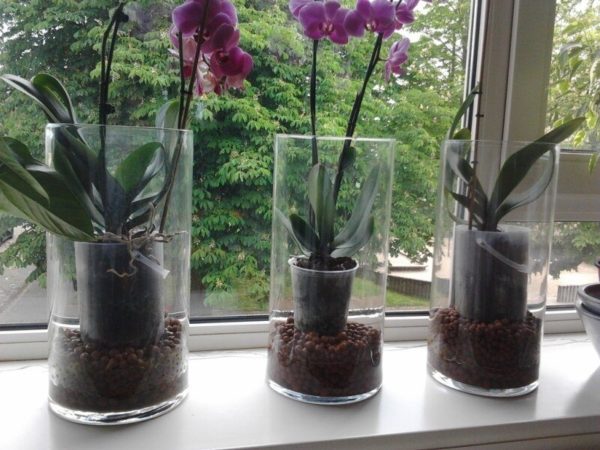 The method of growing orchids in a closed system has its pros and cons. Florists note such advantages:
The method of growing orchids in a closed system has its pros and cons. Florists note such advantages:
- Time saving. A flower that grows in a closed system requires significantly less maintenance.
- Plants develop better: intensively grow leaves and roots.
- Quality flowering. The reason is high humidity. Longer and lush flowering is noted. Large buds are formed.
- Antibacterial properties of sphagnum. Moss contained in the substrate protects the roots from pathogens.
- Restoration of dying flowers. Even orchids that have lost their leaves and roots quickly take on their former appearance.
- The method of cultivating phalaenopsis in an isolated pot is considered optimal for a dry climate. The flowers have enough moisture inside, so there is no need to look for it in the environment.
Orchid cultivation in a closed system has the following disadvantages:
- more time is spent planting a flower;
- planting mold;
- death of the lower foliage;
- education inside the pot of green plaque;
- high risk of root decay;
- the appearance of harmful insects;
- the method is not suitable for humid climates.
Orchid adaptation
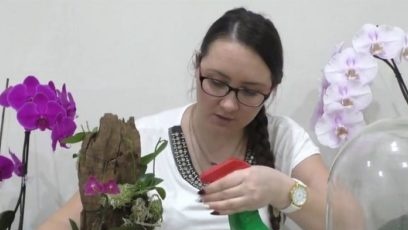 The duration of adaptation of an orchid planted in a closed system depends on the state of the roots. The stronger they are developed, the faster the flower will get used to the new environment. If the transplant is performed according to all the rules, the orchid will easily take root. Sometimes the plant loses its lower leaves or drops buds, which is also considered the norm. If you had to prune a lot of damaged roots, the phalaenopsis transplant will be difficult.
The duration of adaptation of an orchid planted in a closed system depends on the state of the roots. The stronger they are developed, the faster the flower will get used to the new environment. If the transplant is performed according to all the rules, the orchid will easily take root. Sometimes the plant loses its lower leaves or drops buds, which is also considered the norm. If you had to prune a lot of damaged roots, the phalaenopsis transplant will be difficult.
So that during the adaptation to the habitat of the flower there are no problems, you need to follow simple rules:
- The plant is transplanted only in the growth phase.
- On the roots, it is necessary to leave part of the old substrate.
- Top dressing should be postponed, otherwise the plant can be damaged.
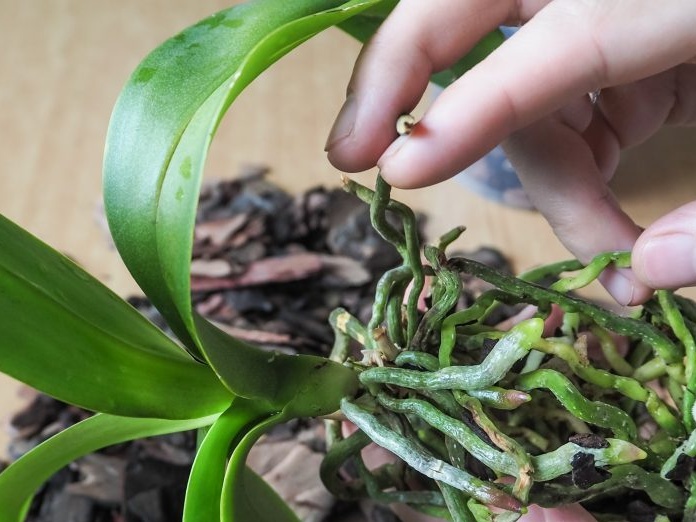 You may be interested in:
You may be interested in:Failure to comply with the rules of cultivation can lead to loss of roots. The main reason is the appearance of rot. If you plant such a plant in a closed system, it will take young roots. The microclimate should resemble a hothouse. It is identical to the conditions in which a flower grows in nature. In order for the roots to grow faster, the temperature in the room should not be lower than + 25 ° С. A flower needs good lighting.
Reviews
Vlada
She planted an orchid in a closed flowerpot when she was left without roots due to rot. The affected parts had to be completely cut off.Young roots appeared only a month later, and then quickly went to growth. Many leaves dried up, but healthy ones grew in their place. A year later, the plant produced a peduncle. Using this method, the orchid was saved, otherwise it would have to be thrown away.
Diana
I use a closed system when I need to grow up children of phalaenopsis. In a humid environment, they quickly grow roots. The shoots should be planted in small containers. Otherwise, the roots will dry out. The new method allows you to get adult copies in a shorter time. In the future, such plants can be grown in any way, creating optimal conditions for them.
Helena
An orchid planted in a container with drainage holes did not bloom for a long time. Although there was enough light and moisture for her. I decided to transplant the flower into a closed system. He quickly took root and pleased with abundant flowering. I was disappointed only with a green coating inside the container, which is clearly visible through the transparent walls.
Phalaenopsis in a closed system grow well, quickly grow roots and leaves. Even a badly damaged plant can be saved. Due to the optimum moisture and antimicrobial properties of sphagnum moss, the roots are protected from rot. This method has many advantages, is simple. It is enough to adhere to the rules of agricultural technology so that the plants are healthy and bloom luxuriously.

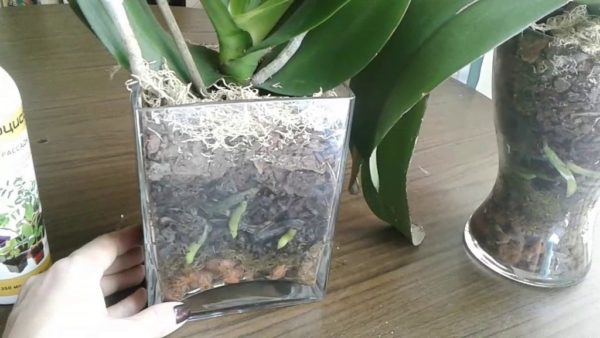
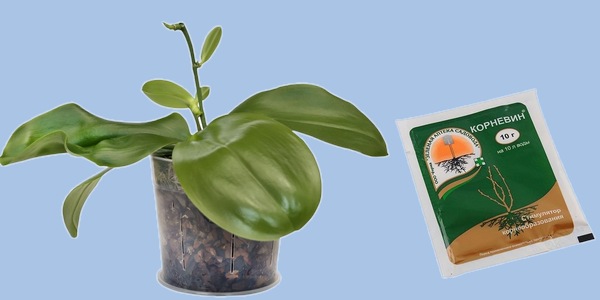
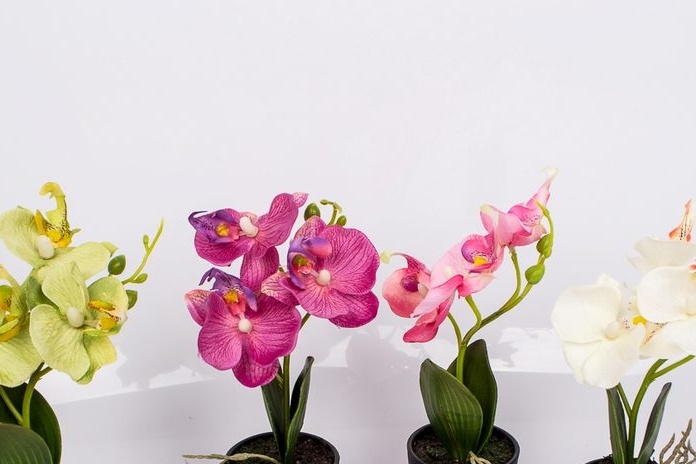
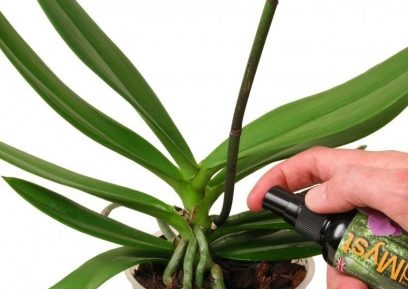
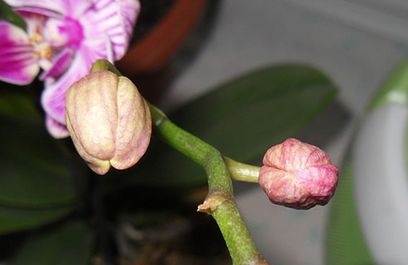 Reasons why orchids fall flowers and what to do
Reasons why orchids fall flowers and what to do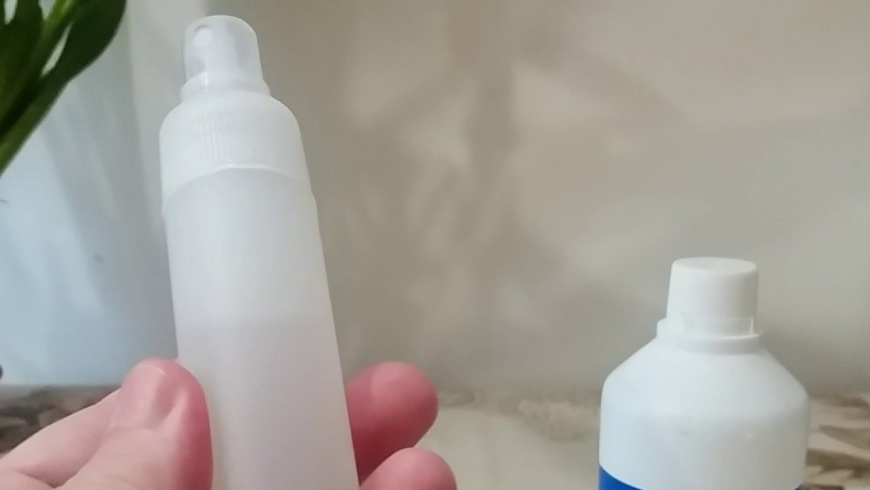 How to use hydrogen peroxide for orchids and why
How to use hydrogen peroxide for orchids and why Midges are wound up in the orchid: effective ways to get rid
Midges are wound up in the orchid: effective ways to get rid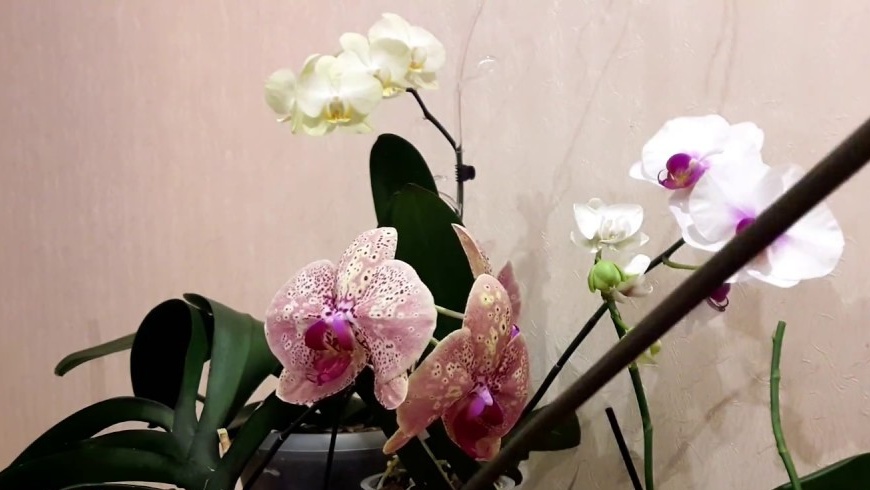 Is it possible to transplant an orchid during flowering
Is it possible to transplant an orchid during flowering